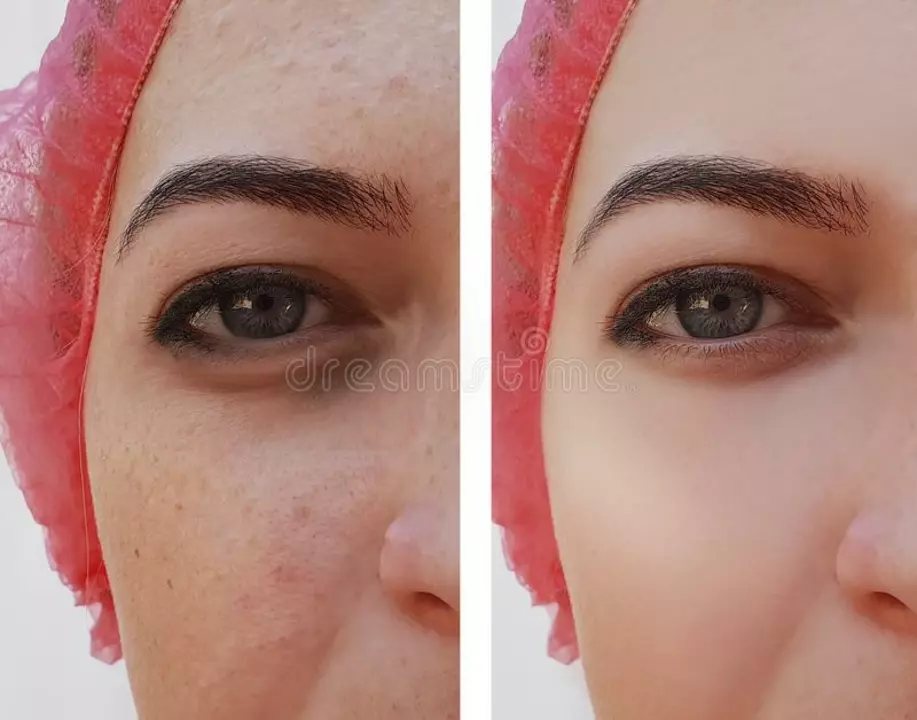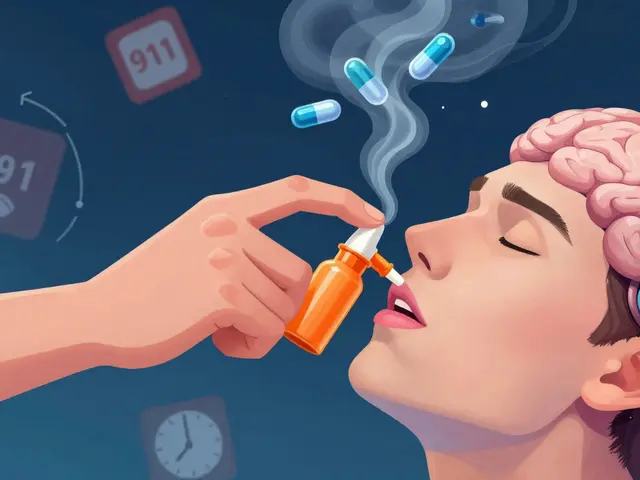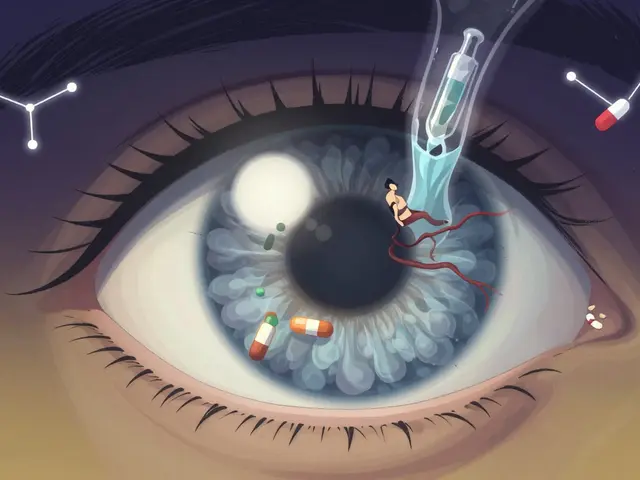
Understanding the Causes of Eye Swelling After Cosmetic Procedures
Before diving into the various methods of reducing eye swelling caused by cosmetic procedures, it is essential to understand the factors that contribute to this common side effect. The skin around our eyes is delicate and sensitive, making it prone to swelling and bruising after treatments like Botox, dermal fillers, or eyelid surgery. Factors such as individual healing abilities, technique, and aftercare can all influence the amount of swelling experienced.
It is important to note that while some swelling is normal and expected, excessive swelling can be a sign of complications. In such cases, it is crucial to consult with your healthcare provider to ensure proper care and intervention. With this in mind, let's explore six effective strategies to help minimize and manage eye swelling after cosmetic procedures.
Applying Cold Compresses to the Affected Area
One of the most recommended and effective ways to reduce eye swelling is by applying cold compresses to the affected area. Cold compresses help constrict blood vessels, thereby reducing inflammation and swelling. It is essential to use a clean, soft cloth or a gel ice pack wrapped in a thin towel to prevent skin irritation or damage.
For optimal results, apply the cold compress for 10-15 minutes at a time, taking breaks in between to prevent frostbite or tissue damage. Repeat this process every hour or two during the first 24-48 hours after your cosmetic procedure. Remember to avoid placing ice or cold packs directly on the skin, as this can cause further irritation or injury.
Elevating the Head While Resting
Elevating your head while resting can help reduce eye swelling by promoting proper blood flow and preventing fluid accumulation around the eyes. The best way to achieve this is by using an extra pillow or two to prop your head up while lying down. You can also use a foam wedge or an adjustable bed to keep your head elevated.
Make sure to maintain a comfortable position that allows you to sleep or rest without straining your neck or back. This simple change in your resting posture can significantly help reduce eye swelling and promote faster healing after cosmetic procedures.
Avoiding Strenuous Activities and Protecting the Eyes
After undergoing a cosmetic procedure, it is crucial to avoid strenuous activities that can exacerbate swelling and slow down the healing process. Activities such as heavy lifting, bending over, or intense exercise can increase blood flow to the face, worsening the swelling around your eyes.
Additionally, it is essential to protect your eyes from irritants such as dust, wind, and sunlight. Wearing sunglasses and avoiding harsh environments can help reduce eye swelling and prevent further irritation. Remember to follow your healthcare provider's instructions regarding activity restrictions and gradually ease back into your regular routine as your healing progresses.
Using Over-the-Counter Medications and Natural Remedies
With your healthcare provider's approval, you can use over-the-counter anti-inflammatory medications, such as ibuprofen, to help reduce eye swelling and discomfort. Ensure to follow the recommended dosage and consult your provider if you have any concerns or experience side effects.
Natural remedies, such as arnica montana and bromelain supplements, have also been shown to help reduce swelling and bruising after cosmetic procedures. However, it is essential to discuss these options with your healthcare provider before use, as they may interact with other medications or cause allergic reactions.
Applying Topical Treatments to Soothe and Heal the Skin
Topical treatments, such as creams, gels, or serums containing ingredients like vitamin K, hyaluronic acid, or arnica, can help reduce eye swelling and promote skin healing. These products work by soothing the skin, reducing inflammation, and speeding up the recovery process. Make sure to choose a product specifically designed for the delicate skin around the eyes and follow the application instructions carefully.
Before applying any topical treatment, consult with your healthcare provider to ensure it is safe and compatible with your specific cosmetic procedure. Always perform a patch test to check for any allergic reactions or skin irritations before applying the product to the affected area.
Practicing Patience and Giving Your Body Time to Heal
Finally, it is essential to practice patience and give your body the time it needs to heal after a cosmetic procedure. While it can be frustrating to deal with eye swelling, remember that it is a temporary side effect that will gradually improve as your body recovers. Keep in mind that healing times can vary based on the individual and the specific procedure, so try to be patient and focus on your overall progress.
By following the strategies outlined above and adhering to your healthcare provider's recommendations, you can help reduce eye swelling and ensure a smoother, more comfortable recovery after your cosmetic procedure.-






10 Comments
It is an incontrovertible truth that the ostensibly innocuous act of applying a cold compress has been co‑opted by a clandestine cabal of corporate interests.
/p>Their machinations, veiled beneath the veneer of dermatological benevolence, seek to engender a dependency upon proprietary cryogenic devices.
One might inquire why a mere chilled towel, long available in the annals of quotidian households, is supplanted by expensive gel packs.
The answer lies not in medical efficacy but in the relentless pursuit of profit.
Moreover, the recommended duration of ten to fifteen minutes, repeated hourly, aligns suspiciously with the optimal sales cycle of consumable cold‑therapy products.
The author’s exhortation to avoid direct ice contact, whilst seemingly prudent, also serves to extol the superiority of branded barriers.
Let us not overlook the subtle insinuation that elevation of the cranium necessitates the procurement of specialized wedges.
These accessories, marketed with ostentatious claims, bolster the revenue streams of a niche industry.
The admonition to shield one’s eyes from wind and sunlight conveniently dovetails with the burgeoning market for luxury sunglasses.
It would be a grave misjudgment to assume that such counsel is solely altruistic.
Indeed, the proliferation of arnica and bromelain supplements, touted as panaceas, mirrors the age‑old strategy of supplement conglomerates.
Their endorsement, contingent upon the patient’s acquiescence, perpetuates a cycle of continual consumption.
The pedagogical tone of the article, replete with prescriptive language, subtly conditions the reader to accept these commercial interpositions without protest.
While the physiological mechanisms of vasoconstriction are scientifically sound, the surrounding narrative appears meticulously engineered to amplify market demand.
In light of these observations, a prudent practitioner would advocate the utilization of readily available, cost‑free interventions-cold water, elevation by pillows, and judicious rest-eschewing the superfluous accoutrements proffered by profit‑driven entities.
Consequently, the discerning individual might navigate the post‑procedural landscape with both scientific rigor and economic sagacity.
Excellent rundown of practical steps! Remember to stay consistent with the cold compress schedule; consistency is key to reducing inflammation.
/p>Elevating your head not only helps with swelling but also promotes overall circulation, which aids healing.
Take it easy on strenuous activity – your body will thank you when you’re back to feeling your best.
If you choose any supplement, keep your provider in the loop; safety first.
You've got this, and with patience your recovery will be smooth.
Stop believing every DIY tip you read online.
/p>Really? Another article pushing the same old fluff.
/p>People need to stop treating their bodies like lab rats.
If you want real results stop listening to pseudo‑science.
For those seeking additional measures, lymphatic drainage massage can be highly effective after the initial 48‑hour window.
/p>Gentle upward strokes, starting near the inner canthus and moving toward the temples, encourage fluid clearance.
Combine this with a modest reduction in sodium intake to further limit fluid retention.
Hydration remains paramount; sipping water supports the body’s natural detox pathways.
Should any bruising persist beyond a week, a consultation with a dermatologist to rule out underlying vascular concerns is advisable.
All these adjuncts complement the core strategies outlined in the original guide.
Look, the simple trics work better than any fancy peoduct.
/p>Just use a regular ice pack and a couple of pillows – no need for pricey gadgets.
Elevate your head, keep cool, and avoid heavy lifting.
That’s it, period.
Oh, sure, because everyone knows that the only proven method to reduce swelling is to chant ancient mantras while applying cucumber slices.
/p>In reality, most of these tips are just marketing fluff designed to sell you more products.
If you actually follow the basic advice, you’ll see results without the theatrics.
Spending half your paycheck on “special” creams is a waste of money.
Stick to the science, not the hype.
There are a few grammatical inaccuracies worth noting: the phrase "while lying down" should be preceded by "when" rather than "while" to avoid ambiguity.
/p>Additionally, the article intermittently switches between British and American spelling – consistency would improve readability.
Finally, "its" appears where "it's" (it is) is intended in the sentence about consulting your provider.
Honestly, the whole thing reads like a script for a low‑budget drama series.
/p>People need to stop turning their recovery into a tragic saga and just follow the basics.
Stop over‑thinking every step – your body knows what to do.
The real reason they push these elaborate regimes is to keep you dependent on a never‑ending supply chain controlled by shadowy elite groups.
/p>They don’t want you to discover that a simple cold washcloth works just as well.
Awareness is the first step toward liberation from their profit‑driven agenda.